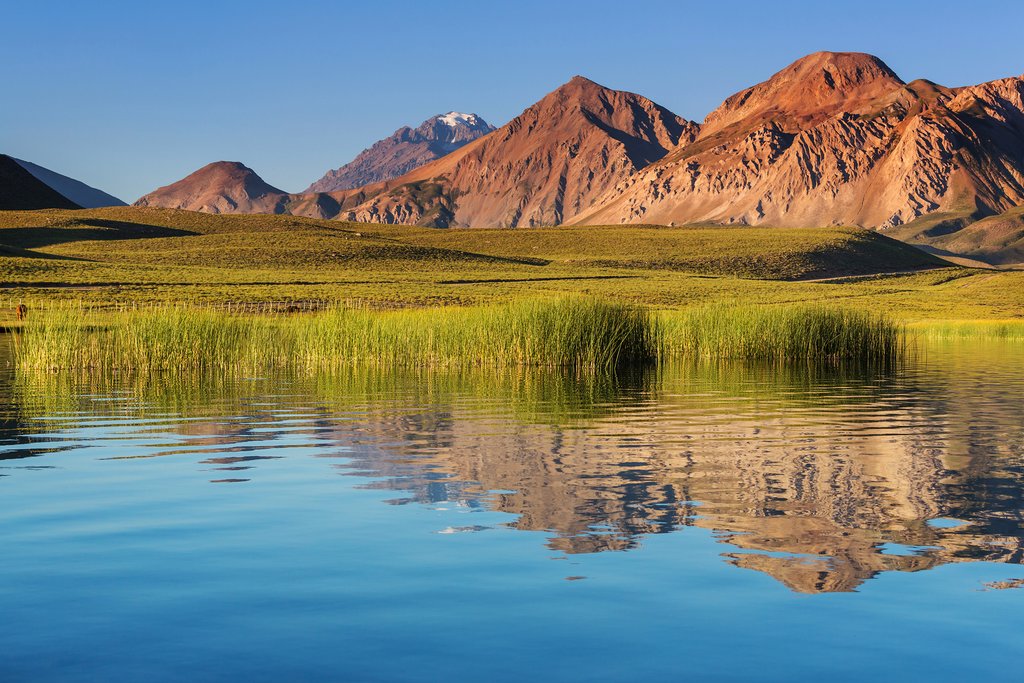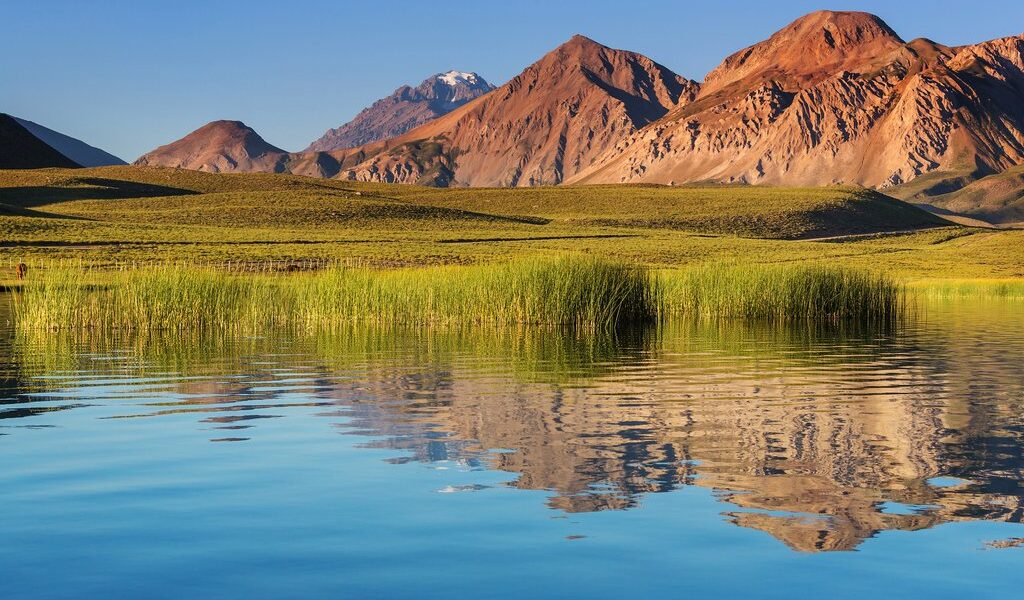
July is Argentina’s peak winter month when ski resorts heat up in Patagonia and Mendoza. This is also a great month to visit Buenos Aires, go whale-watching along the Atlantic coast, and explore desert landscapes, salt flats, waterfalls, and starry skies in the north. Read on for more tips on where to go and what to expect in Argentina this month._x000D_
Argentina beckons with its diverse landscapes and vibrant culture, even as winter casts its spell. Understanding the nuances of traveling to Argentina in July is key to unlocking an unforgettable experience. Let’s delve into the specifics of what you can expect in terms of weather, crowds, costs, and must-see destinations.
## Weather Wonders: A Tale of Two Hemispheres
Argentina’s climate during this time is primarily cooler but expect variations depending on your destination. In the bustling metropolis of Buenos Aires, the air is temperate, often cloudy, and tempered by its coastal location. Expect daily average temperatures to hover in the 50s Fahrenheit, making it pleasant for strolling along the waterfront or exploring the city’s historic neighborhoods.
Venturing north towards the Brazilian border, near the magnificent Iguazú Falls, you’ll encounter a dramatic shift towards a more tropical environment. The air becomes thick with humidity, and temperatures climb into the mid-70s Fahrenheit. This creates a lush, verdant backdrop for experiencing the awe-inspiring power of the falls.
In contrast, the high Andean region spanning northern Chile and Argentina, particularly the Salta-Jujuy Provinces, is typically dry and clear. This is particularly noticeable this time of year. The crisp mountain air and clear skies offer stunning views and ideal conditions for exploring the unique landscapes of this region.
Heading south into the vast expanse of Patagonia, the weather shifts again, with temperatures generally staying in the 30s Fahrenheit. However, Patagonia is a land of microclimates, so conditions can vary greatly depending on your specific location. While skiing is a popular activity, this province isn’t a major tourist draw this time of year due to the wet and cold conditions. Also, fewer daylight hours mean fewer opportunities for outdoor adventures.
## Navigating Crowds and Costs: Finding the Sweet Spot
Winter in Argentina generally sees fewer foreign visitors compared to the peak seasons. However, the mountain resorts in Patagonia and near Mendoza come alive with skiers and snowboarders, especially during Argentina’s winter holidays in mid-July, locally known as *receso*. Schools also schedule week-long breaks during the academic year, with the specific dates determined by individual schools. Consequently, hitting the slopes during these times translates to higher costs and greater crowds.
For budget-conscious travelers and those seeking solitude, Northern Argentina presents an attractive alternative. You’ll likely find excellent deals on accommodation and tours with fewer crowds. Southern Patagonia experiences a significant drop in tourism, with many lodgings closing for the season. While the cold temperatures, rain, and shorter days might deter some, those who brave the Patagonian winter can be rewarded with breathtaking, untouched landscapes, absent of the region’s infamous summer winds. Keep in mind that transportation services often operate on a reduced schedule.
## Where to Go: Unveiling Argentina’s Winter Gems
For snow sports enthusiasts, Argentina boasts a selection of world-class ski resorts scattered throughout Patagonia and near the esteemed wine region of Mendoza. Argentina’s ski scene has garnered increasing attention in recent years, offering a potentially less crowded experience than the slopes of Chile. Consider exploring Argentine resorts like Chapelco, conveniently located near San Martín de Los Andes, or La Hoya, an excellent choice for families. For a truly unique experience, venture near Ushuaia, the world’s southernmost city, and discover the unparalleled ski area surrounding Cerro Castor.
Away from the ski slopes, many non-ski areas of Patagonia either empty out or close down for the season, making July the ideal time to explore Argentina’s northern regions. The abundant sunshine and comfortable temperatures make Salta and the nearby wine region of Cafayate particularly appealing.
This is also an opportune time to witness the grandeur of Iguazú Falls, the world’s largest waterfall system, straddling the border of Brazil and Argentina. Alternatively, head to Peninsula Valdes along the Atlantic coast as it enters its annual whale-watching season.
## What to Do: Embracing Argentina’s Winter Activities
For captivating marine life encounters, Peninsula Valdes is the place to be. The two main bays of Peninsula Valdes are where you can witness the majestic southern right whale. These magnificent creatures can reach lengths of up to 65 feet (20 m). During Argentina’s winter months, the whales in the bay engage in spectacular displays of breaching and other behaviors, offering an unforgettable spectacle.
While exploring the area, dedicate time to observe the charming penguin colonies found along the coast of Peninsula Valdes at Punta Tombo, Punta Norte, and Punta Delgada. Punta Tombo Rookery is home to over 500,000 Magellan penguins. This guide to Puerto Madryn, its gateway city, offers a wealth of information about the peninsula.
Moving further north, you’ll find Iguazú Falls, an unforgettable destination. Dedicate time to exploring the hundreds of waterfalls along the Three Borders Landmark, where Argentina, Brazil, and Paraguay converge. From the walking paths surrounding the cascades, you can enjoy panoramic views of Iguazú Falls. You can choose to experience the falls through hiking, boating, or biking, depending on your desired level of activity.
Another highlight during this time of year is Salta, known as ‘La Linda’ (meaning Salta the beautiful). This city is known for its well-preserved colonial architecture from the 16th century. Embark on a guided city tour to visit Salta’s most iconic buildings and churches, or take a relaxing gondola ride for a bird’s-eye view of the city. Numerous noteworthy day trips originate from Salta, leading to expansive salt flats, dramatic canyons, renowned wineries, and stunning gorges. These excursions offer opportunities for hiking, biking, and horseback riding.
As mentioned earlier, July signifies winter, and you can fully embrace the snowy season by hitting the slopes at Argentina’s premier ski resorts. For a different winter experience, consider embarking on cross-country skiing or dog sledding excursions that depart from Ushuaia, located at the southernmost tip of the country.
## Events in July: Celebrating Culture and Winter
**Día de la Independencia:** Argentina’s Independence Day is celebrated on July 9th, with festivities particularly vibrant in Tucumán, where independence was first declared. This nationwide celebration marks the anniversary of Argentina’s independence in 1816.
**Snow Festival in Bariloche:** The Snow Festival has become a staple event in Bariloche. It is celebrated for being suitable for the entire family and spreading optimism and joy during the winter season.
**The Alpine Chocolate Festival:** During July, the village of Villa General Belgrano hosts The Alpine Chocolate Festival, offering a wide variety of handcrafted chocolate creations.
**Salta & Jujuy Province:** Argentina’s Salta & Jujuy Province showcases the beautiful city of Salta on a 5-day tour of northwest Argentina. A flight from Buenos Aires lets you explore the best preserved colonial cities in South America. Then hit the road with an experienced guide and visit the giant salt flats and Humahuaca Gorge, as well as traditional Andean towns known for pre-Colombian history in the Jujuy Province.
**Wildlife & Nature in Argentina Patagonia:** This 15-day tour in Argentine Patagonia highlights Puerto Madryn in the north to Ushuaia in the south with outdoor activities and wildlife. On the itinerary are two national parks: Tierra del Fuego (rivers and ancient settlements) and Los Glaciares (glaciers and iconic hikes). There’s also whale watching, snorkeling with sea lions, and a visit to South America’s largest Magellanic Penguin colony.
(Word count: 1217)
B-54

